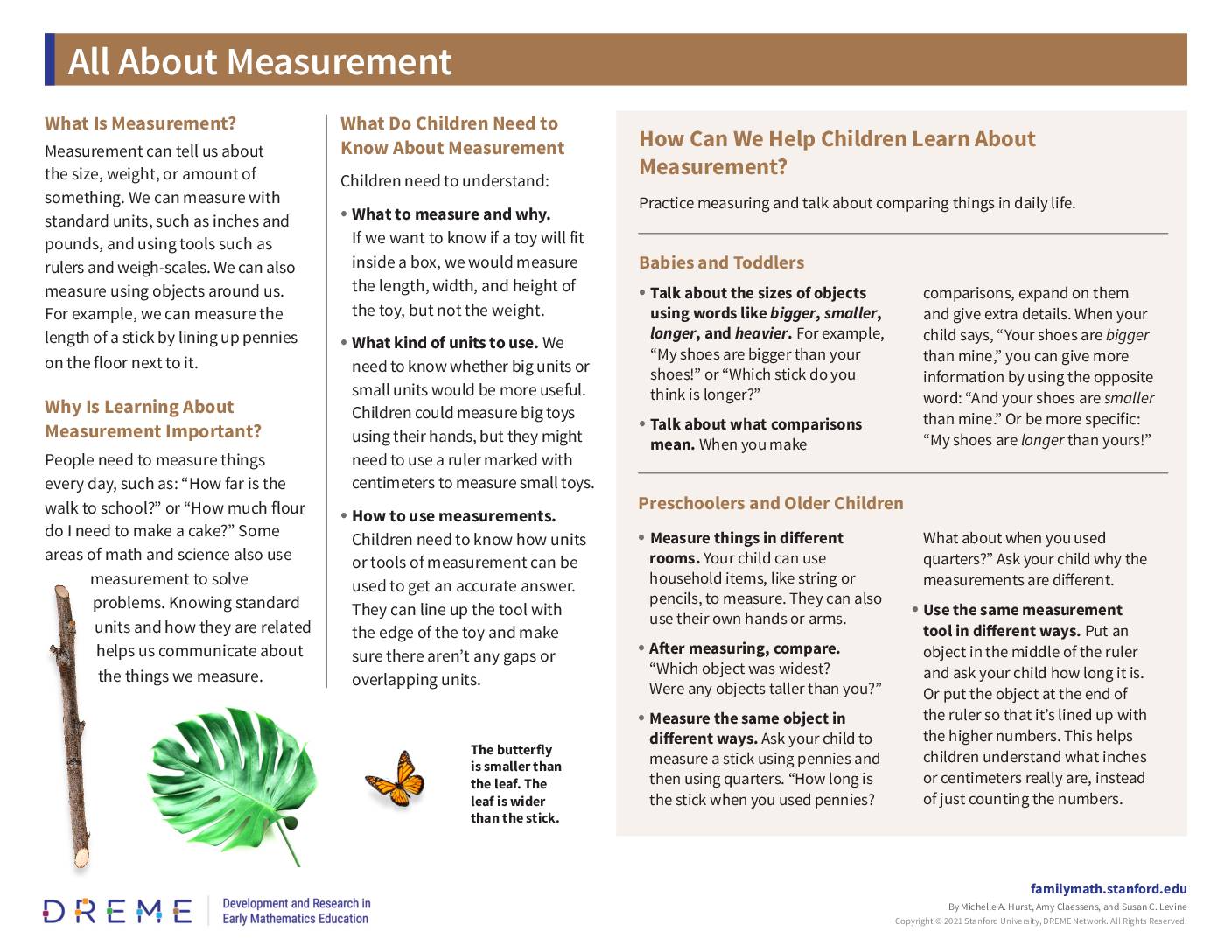
What Is Measurement?
Measurement can tell us about the size, weight, or amount of something. We can measure with standard units, such as inches and pounds, and using tools such as rulers and weigh-scales. We can also measure using objects around us. For example, we can measure the length of a stick by lining up pennies on the floor next to it.
Why Is Learning About Measurement Important?
People need to measure things every day, such as: “How far is the walk to school?” or “How much flour do I need to make a cake?” Some areas of math and science also use measurement to solve problems. Knowing standard units and how they are related helps us communicate about the things we measure.
What Do Children Need to Know About Measurement?
Children need to understand:
- What to measure and why. If we want to know if a toy will fit inside a box, we would measure the length, width, and height of the toy, but not the weight.
- What kind of units to use. We need to know whether big units or small units would be more useful. Children could measure big toys using their hands, but they might need to use a ruler marked with centimeters to measure small toys.
- How to use measurements. Children need to know how units or tools of measurement can be used to get an accurate answer. They can line up the tool with the edge of the toy and make sure there aren’t any gaps or overlapping units.
